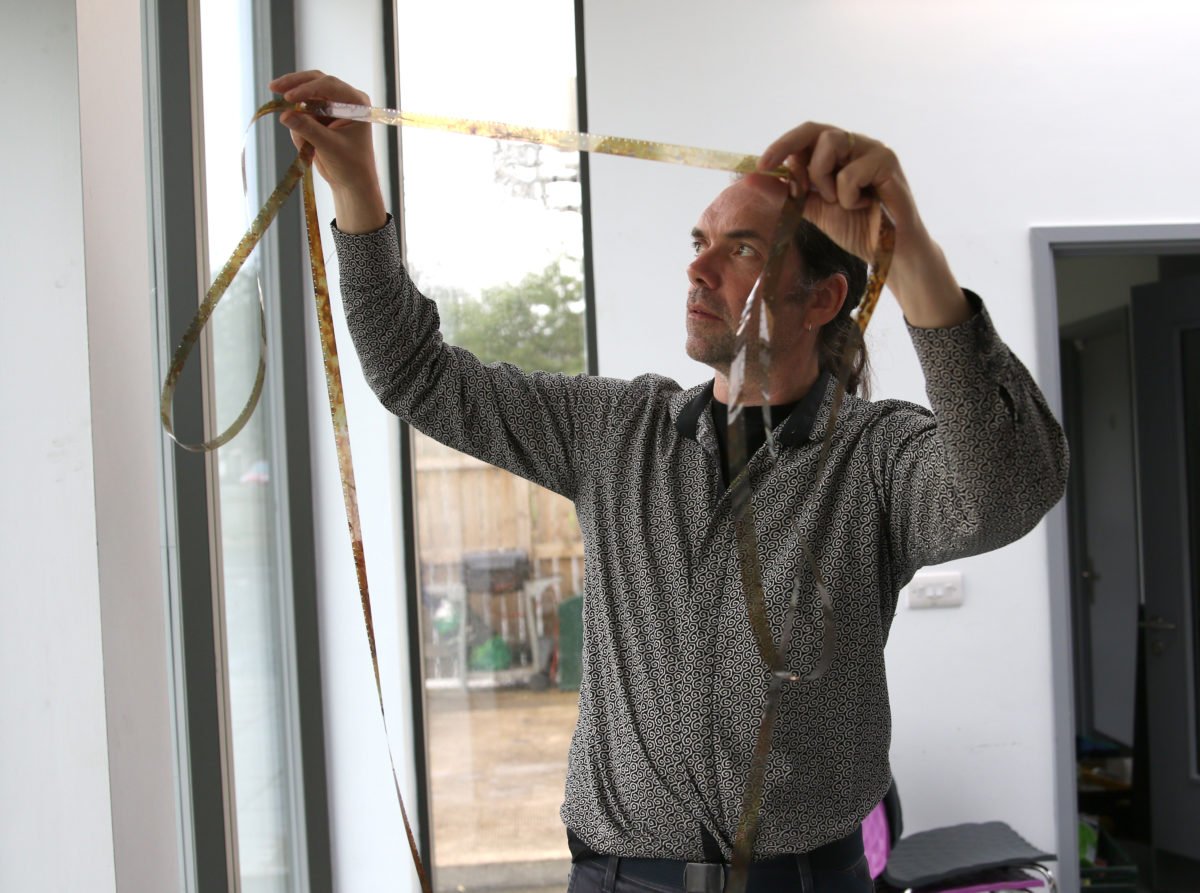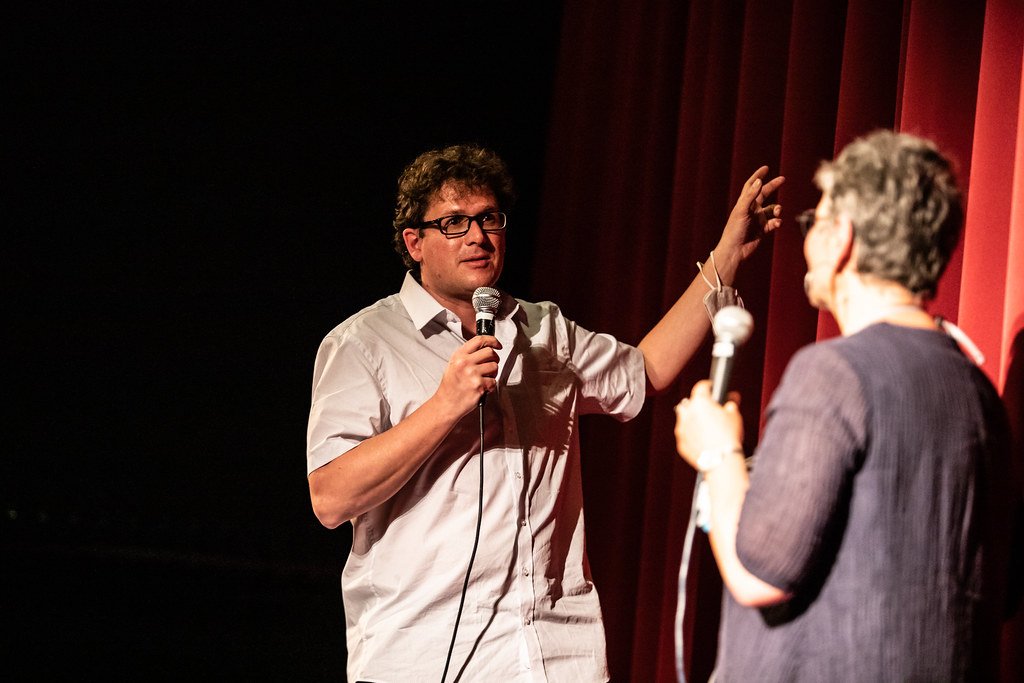Karel Doing and Sigfried Fruhauf Films Play at SF Cinematheque's Crossroads Festival
/FILMMAKER KAREL DOING. SOURCE: ALCHEMY FILM & ARTS.
From September 8th to September 10th, 2023, films by Karel Doing and Sigfried Fruhauf played at the Crossroads Film Festival at the San Francisco Cinematheque! The festival’s programmer, Steve Polta, is a longtime colleague of GME President Jon Gartenberg.
Founded by legendary filmmaker Bruce Baillie in 1961, the San Francisco Cinematheque is the Bay Area’s only dedicated venue for avant-garde, experimental, underground, and personally expressive film and video work. Crossroads is the Cinematheque’s annual festival celebrating recent (and rediscovered) artist-made film, video, and performance cinema. This year’s festival featured 62 works of film, video, and performance by 61 artists representing 20 countries and territories, across 10 curated programs.
In Crossroads’ fifth program, titled upheld in rolling air by finer gravitations, Karel Doing’s experimental short film OXYGEN made its world premiere. As a descriptor for the film, Doing provided: “Blades of grass are racing across the screen.” Doing is an “artist, filmmaker, and researcher whose practice investigates the relationship between culture and nature by means of analogue and organic process, experiment, and co-creation;” he has been making films for over 30 years. GME distributes two of the artist’s early works, 1993’s LICHTAJAREN and 1999’s ENERGY ENERGY, in the collection STUDIO EEN: EXPERIMENTAL FILMS FROM THE LOWLANDS. This release is available as both a physical DVD and a DSL file.
Doing was instrumental in the creation of Studio één in the late 1980s. By the end of that decade, as many artistic, avant-garde, underground, and counterculture movements seemed to be over, the rise of video and its academic use began to compete with Super8. To work against the decline of the Super8 format and techniques, Doing and two of his friends, Saskia Fransen and Djana Mileta, from the art school in Arnhem, started to think about creating a new space and promoting the invention of DIY techniques for filming and processing Super8 films.
In this particular context, Studio één was launched. They bought optical printers from a professional laboratory that was set to shut down and started to learn by themselves, out of necessity, how to process film. It wasn't long before Studio één became well-known in DIY film circles and began to host various artists who come to meet each other, not only to exchange ideas and work together on the use of Super8 or 16mm, but also to experiment with diverse narrative and sound forms.
FILMMAKER SIGFRIED FRUHAUF. SOURCE: FLICKR.
Meanwhile, in Crossroads’ ninth program, titled sympathetic bodies, filmmaker and multimedia artist Sigfried Fruhauf premiered his latest short film CAVE PAINTING. As described by programmer Christa Pluminger:
In Siegfried Fruhauf’s dream-like etude, human traces from an unimaginably distant past appear as an intensified vision of the origin of painting. CAVE PAINTING leads us to real natural phenomena that have been shaped by civilization. A seemingly spherical thunderstorm of individual images leads us to a rock face whose interior opens pulsatingly. The dizzying expedition along rock structures and cavities is increasingly determined by colors, contrasting lighting, three-dimensional effects, and illusions of movement. Fruhauf celebrates the movie screen in a loose way, following the example of Robert Smithson — namely, as a place of flickering apparitions whose blurred, floating perception is due to a specific environment. He understands the cinema experience as cave exploration.
GME distributes Fruhauf’s 10-minute short film from 2008, NIGHT SWEAT, in the collection VISIONARY: CONTEMPORARY SHORT DOCUMENTARIES AND EXPERIMENTAL FILMS FROM AUSTRIA, which is available as both a DVD and DVD/DSL bundle. GME also distributes, to the North American university market, Fruhauf’s 9-minute short film from 2001, EXPOSED. (A page for this specific title on GME’s website is forthcoming).
As described by film scholar and writer Maya McKechneay for the Film-Makers’ Cooperative:
EXPOSED uses a short scene from a feature film [of] a man observ[ing] a dancing woman through a keyhole… Solely fragments of this tableau are visible to the viewer, and Fruhauf ‘re-exposes’ the scene by passing the perforations of a strip of film in front of the projector so that they resemble a moving sieve. While the moving stencil allows us to see no more than portions of the scene, the narration's ‘peeping tom’ motif is repeated in our own perception. Sight can no longer be taken for granted and therefore increases in fascination. Fruhauf also breaks up the intended movement of the found footage on the temporal level. The apparent irregularity of the fields of light scanning over the strip of film is juxtaposed with a metronomically-precise rhythm, which segments the scene… A particular scene is segmented and reassembled in a new way, and the space inside the frame is broken down into a moving prism. Together with the soundtrack (rising and falling white noise, drips and whispers), Fruhauf's study on seeing and being seen, light and movement — in other words, cinema — has a nearly hypnotic effect.
Click on the above links to learn more about these fascinating films and filmmakers, and stay tuned for GME’s forthcoming listing of Fruhauf’s EXPOSED, as well as potential GME titles or artists that may play at next year’s Crossroads Film Festival!



